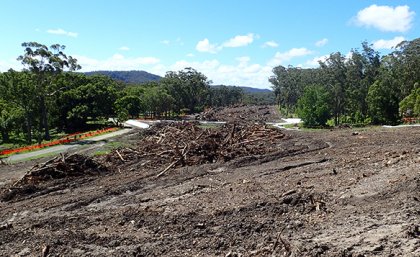
Australia has some of the highest rates of private land deforestation in the world, despite policies designed to prevent the practice.
University of Queensland researchers have conducted what they believe to be the first robust analysis of a policy’s ability to reduce deforestation of remnant trees in Queensland, amid debate about policy effectiveness and the significant costs to farmers and graziers.
The study measured whether Queensland’s Vegetation Management Act 1999 had reduced deforestation of remnant trees in the Brigalow Belt South, a biodiversity hotspot on the Queensland-New South Wales border.
Centre of Excellence for Environmental Decisions researcher Blake Alexander Simmons said government conservation policies often lacked thorough evaluation.
“This can lead to an over-reliance on simple impact indicators, like the amount of remaining forest,” Mr Simmons said.
“There can also be a failure to recognise other determining factors like socio-economic change, climate conditions, and behaviour created by the policy itself.”
 Mr Simmons said a large decline in remnant vegetation clearing from 2006 to 2011 was often used as evidence of the effectiveness of the Vegetation Management Act.
Mr Simmons said a large decline in remnant vegetation clearing from 2006 to 2011 was often used as evidence of the effectiveness of the Vegetation Management Act.
“However, when we control for other influential factors, we see very minimal effectiveness of the policy during this period, likely due to the effects of the millennium drought.”
The researchers said how the policy influenced deforestation needed investigation, including indirect effects of the Act.
“Landholders appear to have redirected their clearing preferences away from protected trees, which is a positive outcome for the environment.
“If we want to protect Queensland landscapes, the government must promote this new behavioural norm while ensuring vegetation management policy effectively protects remaining vegetation.”
The researchers determined an upper and lower bound of policy effectiveness.
“Under the most effective scenario, the Act saved more than 19,000 hectares of remnant trees, but this amount is much smaller than many people expected.
“Under the least effective scenario, the Act actually increased remnant tree clearing by 1000 hectares due to the effects of ‘panic clearing’.”
The paper is published in the journal Environmental Research Letters.
Media: Blake Alexander Simmons, b.simmons@uq.edu.au, +61 448 716 366; CEED Communications, c.fung@uq.edu.au, +61 433 638 643.










